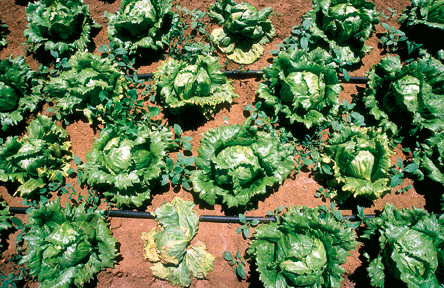
|
Published:
Systems thinking and the ‘factor five’ payoff
Government efforts to help our economy through the global financial crisis could be eroded by the future economic impacts of global warming. The good news is that a ‘factor five’ approach to productivity – delivering five times more value with the same input, or using one-fifth the resources to deliver the same value – will not only help cut greenhouse gas emissions but, done effectively, bring economic benefits.

|
|
Same service, less energy: insulation to reduce heat-generation from restaurant ovens can reduce air-conditioning requirements. Credit: iStockphoto
|
Research by financial services provider HSBC has shown that most investments in a low-carbon economy – for example, building for energy efficiency, renewable energy technologies, low-carbon vehicles, rail transport, and ‘smart’ grids and meters – lead to strong economic multipliers.1
This was put to the test in response to the global financial crisis with South Korea investing 81 per cent of its stimulus package – some US$30 billion (or 2.3 per cent of their annual GDP) – on green investments that led to job creation, with the EU at 58.7 per cent, China at 37.8 per cent, and the US at 9.8 per cent.
However delivering jobs and growth from such investments requires not only rapid technological innovation, but a ‘whole of society’ approach. Governments will need to revise relevant policies; business and industry will need to carefully re-assess operations; the professions will need to renew their curriculum and practice; research organisations will need to identify new opportunities; and consumers will need to revise their purchase choices.
In 1997, the book Factor Four2 presented compelling evidence to show that significant reductions in the consumption of energy and water could be profitable. More than a decade later, a new book, Factor Five3 revisits and builds on the previous work to present the case for sector-wide advances that can deliver significant resource productivity improvements over the coming decades. The book presents a collaboration between the Australian team from The Natural Edge Project led by Charlie Hargroves, and the original lead author of Factor Four, Professor Ernst von Weizsäcker.
The factor five concept is that of delivering five times more value with the same input or, alternatively, using one-fifth the resources to deliver the same value with the aim of achieving 80 per cent resource productivity improvements.

|
|
A ‘factor five’ approach to producing food crops might include the use of drip irrigation to replace spray systems, which use more water. Credit: ScienceImage
|
Such a transformational improvement is achievable through a ‘whole system approach’ – this means that productivity gains in the use of water, energy and materials affect each other. For example, if a household or business reduces their hot water consumption, this would also reduce associated onsite heating, water treatment and distribution costs. The result would be reduced electricity use and lower greenhouse gas emissions in the home or business, and by the water utility.
In adopting this approach, the first place for a business to start is asking the right questions before the design or retrofit phase, as this can lead to significant resource productivity improvements, cost reductions, and superior performance and outcomes. This may take the form of a facilitated scoping or design ‘charrette’ that involves the design and project teams. Questions to ask at this stage might include: What is the required service? How else can this same service be provided with less environmental impact? This typically leads to different or new design options that can dramatically change the outcome by reducing environmental impacts but still provide the same service.
Examples are all around us. Many companies now use videoconferencing to reduce air travel; more designers are using natural light and advanced lamps to reduce the use of energy intensive lights in buildings; restaurants are now installing super-insulated equipment to reduce heat-generation from ovens thus reducing air-conditioning requirements. Innovative companies are now using geopolymer materials to replace energy-intensive Portland cement in the building sector. Power utilities are investigating how energy-efficiency measures can provide financial rewards to both the utility and the customer.
The reality is that, by and large, consumers will consume what is important to them, and producers will produce what is profitable to them. Hence, as Ernst von Weizsäcker has long advocated, resource productivity should become ever-more profitable for producers, and resource-saving goods and services should become more affordable to consumers than conventional, resource-wasteful options.
1 Robins N, Clover R & Singh C (2009) A Climate for Recovery – The Colour of Stimulus Goes Green. HSBC Global Research, London.
2 von Weizsäcker E, Lovins A & Lovins L (1997) Factor 4: Doubling Wealth, Halving Resource Use. Earthscan, London.
3 von Weizsäcker E, Hargroves K, Smith M, Desha C & Stasinopoulos P (2009) Factor 5: Transforming the Global Economy through 80% Improvements in Resource Productivity. Earthscan Press, London.
(See www.naturaledgeproject.net/Factor5.aspx for sample chapters).




